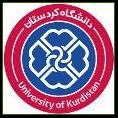|
Session number*
|
|
|
1
|
1.1 Some Fundamental Definitions
1.2 Chemical Arts and the Origins of Modern Chemistry
|
|
2
|
1.3 The Scientific Approach: Developing a Model
1.4 Chemical Problem Solving
|
|
3
|
1.5 Measurement in Scientific Study
1.6 Uncertainty in Measurement: Significant Figures
|
|
4
|
Solving selected problems of Chapter 1
|
|
5
|
2.1 Elements, Compounds, and Mixtures: An Atomic Overview
2.2 The Observations That Led to an Atomic View of Matter
2.3 Dalton’s Atomic Theory
|
|
6
|
2.4 The Observations That Led to the Nuclear Atom Model
2.5 The Atomic Theory Today
2.6 Elements: A First Look at the Periodic Table
|
|
7
|
2.7 Compounds: Introduction to Bonding
2.8 Compounds: Formulas, Names, and Masses
2.9 Mixtures: Classification and Separation
|
|
8
|
Solving selected problems of Chapter 2
|
|
9
|
3.1 The Mole
3.2 Determining the Formula of an Unknown Compound
3.3 Writing and Balancing Chemical Equations
|
|
10
|
3.4 Calculating Amounts of Reactant and Product
3.5 Fundamentals of Solution Stoichiometry
|
|
11
|
Solving selected problems of Chapter 3
|
|
12
|
The First Midterm Examination
|
|
13
|
5.1 An Overview of the Physical States of Matter
5.2 Gas Pressure and Its Measurement
5.3 The Gas Laws and Their Experimental Foundations
|
|
14
|
5.4 Further Applications of the Ideal Gas Law
5.5 The Ideal Gas Law and Reaction Stoichiometry
|
|
15
|
5.6 The Kinetic-Molecular Theory: A Model for Gas Behavior
5.7 Real Gases: Deviations from Ideal Behavior
|
|
16
|
Solving selected problems of Chapter 5
|
|
17
|
6.1 Forms of Energy and Their Interconversion
6.2 Enthalpy: Heats of Reaction and Chemical Change
6.3 Calorimetry: Laboratory Measurement of Heats of Reaction
|
|
18
|
6.4 Stoichiometry of Thermochemical Equations
6.5 Hess’s Law of Heat Summation
6.6 Standard Heats of Reaction
|
|
19
|
Solving selected problems of Chapter 6
|
|
20
|
7.1 The Nature of Light
7.2 Atomic Spectra
|
|
21
|
7.3 The Wave-Particle Duality of Matter and Energy
7.4 The Quantum-Mechanical Model of the Atom
|
|
22
|
Solving selected problems of Chapter 7
|
|
23
|
8.1 Development of the Periodic Table
8.2 Characteristics of Many-Electron Atoms
|
|
24
|
8.3 The Quantum-Mechanical Model and the Periodic Table
8.4 Trends in Three Key Atomic Properties
|
|
25
|
8.5 Atomic Structure and Chemical Reactivity
|
|
26
|
Solving selected problems of Chapter 8
|
|
27
|
The Second Midterm Examination
|
|
28
|
9.1 Atomic Properties and Chemical Bonds
9.2 The Ionic Bonding Model
|
|
29
|
9.3 The Covalent Bonding Model
9.4 Bond Energy and Chemical Change
|
|
30
|
9.5 Between the Extremes: Electronegativity and Bond Polarity
9.6 An Introduction to Metallic Bonding
|
|
31
|
Solving selected problems of Chapter 9
|
|
32
|
10.1 Depicting Molecules and Ions with Lewis Structures
|
|
33
|
10.2 Valence-Shell Electron-Pair Repulsion (VSEPR) Theory and Molecular Shape
|
|
34
|
10.3 Molecular Shape and Molecular Polarity
|
|
35
|
Solving selected problems of Chapter 10
|
|
36
|
11.1 Valence Bond (VB) Theory and Orbital Hybridization
|
|
37
|
11.2 The Mode of Orbital Overlap and the Types of Covalent Bonds
|
|
38
|
11.3Molecular Orbital (MO) Theory and Electron Delocalization
|
|
39
|
Solving selected problems of Chapter 11
|


